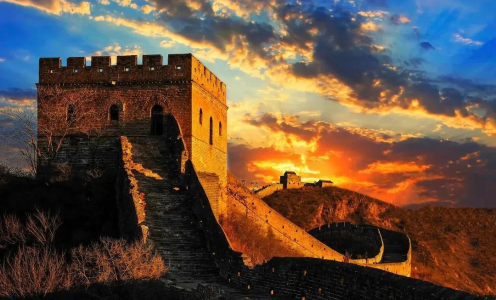Known as the Great Wall of China. Even just the name conjures up images of ancient battles, the might of the imperial government, and a breathtaking structure that winds its way through mountains and valleys. In addition to being a symbol of China’s extensive history, it is also a UNESCO World Heritage Site, which is a testament to the inventiveness and perseverance of humans. In addition to being a wall, it is an experience that is both powerful and evocative.
Nevertheless, experiencing the Great Wall is not limited to merely observing it from a distance. Walking on its ancient stones, feeling the wind whip through the watchtowers, and imagining the lives of those who constructed and defended it hundreds of years ago are all part of the experience. A journey of this magnitude requires careful planning, but hiking the Great Wall is an experience that is unlike any other adventure you could possibly have. You can ensure that you will have a safe, enjoyable, and truly unforgettable experience by conducting a hike that is well-prepared.
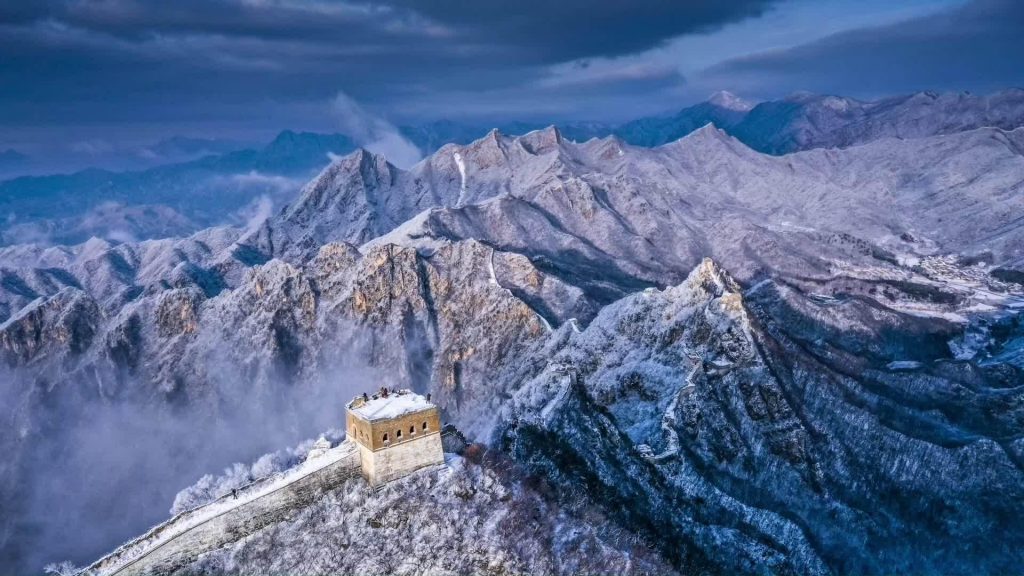
Unveiling the Many Faces of the Wall While You Choose Your Path
Instead of being a single, continuous structure, the Great Wall is actually a collection of walls and fortifications that were constructed over the course of several centuries. This indicates that you have a wide variety of sections to select from, each of which possesses its own distinct personality, level of difficulty, and allure. Choosing the appropriate section is essential, and it is dependent on your current level of physical fitness, the amount of time you have available, and the kind of experience you are looking for.
The section of the mountain known as Mutianyu, which is renowned for its well-preserved condition and breathtaking scenery, is among the most beloved for hiking. As a result of the availability of cable cars and even a toboggan run, it is an excellent choice for families and individuals who are looking for a less strenuous method of hiking. It is possible to easily spend an entire day exploring this section due to the breathtaking views that are contained within it.
There is a wonderful equilibrium between the restored and unrestored sections that can be found in Jinshanling. There will be crumbling, wild stretches that whisper stories of time and history, as well as walls that have been meticulously maintained; both will be encountered. Every corner is a photographer’s paradise, with undulating hills and breathtaking vistas waiting to be captured. 📸 There are some steep climbs and uneven terrain along this hike, which makes it a moderately challenging experience.
In the case of those who are truly daring, there is Jiankou. This section is well-known for its wild beauty that has not been restored and for its more difficult climbs. It is not for those who are easily discouraged because it features steep ascents, crumbling walls, and narrow paths. The rewards, however, are immense, as they include views that are unmatched, a feeling of genuine exploration, and a connection to the wild and unbridled spirit of the great Wall of China. You should be aware that Jiankou calls for a high level of physical fitness as well as prior experience hiking.
Take into consideration the following while making your decision:
- What kind of difficulty are you looking for? Are you looking for an easy stroll or a difficult climb?
- The accessibility of the section is measured by how easy it is to reach by car or by public transportation.
- Do you feel more at ease in places with a larger number of people, or do you prefer to have a more intimate experience?
- What kinds of views are you hoping to see through the scenery? Mountain ranges covered in forests, undulating hills, or towering cliffs?
- Restoration Level: Do you want an experience that is pristine and well-kept, or do you want a hike that is raw and rugged?
When it comes to planning your trek, timing is everything: selecting the ideal season
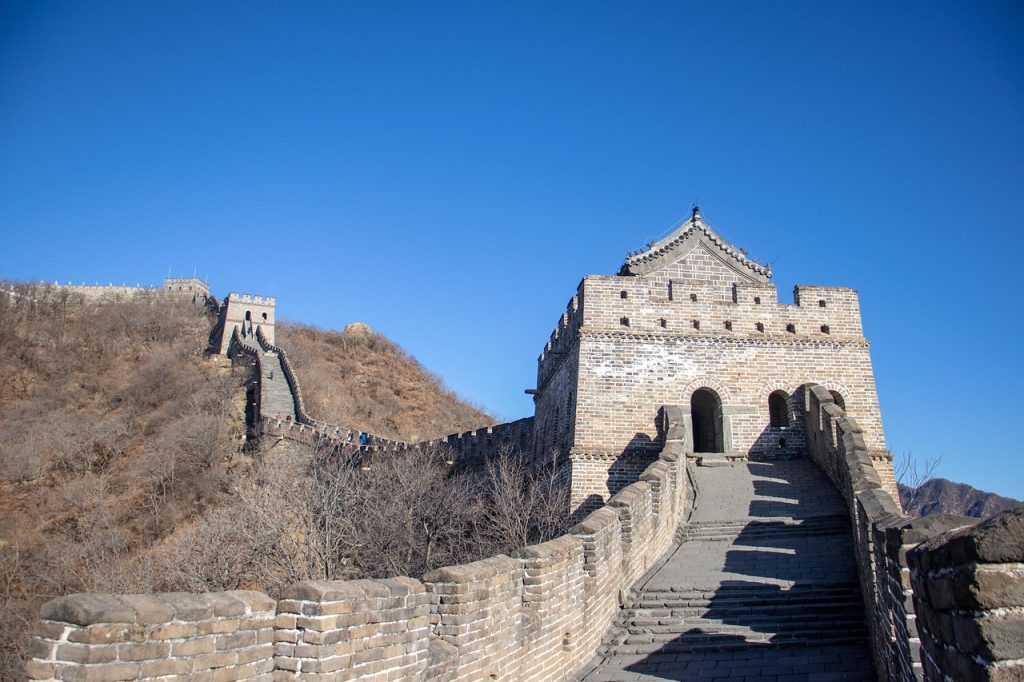
The Great Wall goes through distinct seasons, and the time of year that you choose to visit will have a significant impact on the impression that you take away from your trip. It is generally agreed upon that the best times to go hiking are during the spring (April-May) and autumn (September-October) seasons. The weather is generally mild and pleasant, with temperatures that are comfortable and clear skies; the sky is clear. Because of this, you will also be able to avoid the peak tourist crowds that visit the Wall during the summer months.
The landscape is transformed into a vibrant tapestry of color as a result of the arrival of spring, which brings with it blooming flowers and lush greenery. In autumn, the mountainsides are ablaze with vibrant hues of red, orange, and gold, showcasing the breathtaking beauty of the foliage. 🍂🍁 During these times of the year, the weather is perfect for enjoying comfortable hiking and photography.
It is possible for the summer months of June through August to be extremely hot and humid, particularly in the months of July and August. The heat can be extremely intense, and there is a greater possibility of precipitation. If you decide to go hiking during the summer, it is important to ensure that you begin your journey early in the morning, consume a substantial amount of water, and dress appropriately. ☀️💦
It is possible for winter, which lasts from November to March, to be extremely cold, with temperatures below freezing and the possibility of snow and ice. The Wall when it is covered in snow can be a breathtaking sight; however, hiking on it can be extremely dangerous. It is even possible that certain sections will be closed due to safety concerns. **❄️
Getting Ready for the Trip: Put on Your Gear and Try to Get Fit
Walking along the Great Wall of China is a physically demanding activity that requires preparation, even on the more accessible sections of the wall. You will be walking for a number of hours, frequently on terrain that is not level, and there will be some steep ascents and descents.
Get started on a workout routine that includes the following before you leave:
- You can build your stamina by engaging in cardiovascular exercise, such as walking, jogging, cycling, or swimming.
- The legs and core muscles should be the primary focus of your strength training in order to improve your stability and endurance.
- Practise Hiking: If you are able to, consider going on some practise hikes in your immediate vicinity, gradually increasing the distance and the level of difficulty.
Packing the appropriate equipment is equally as important as getting yourself physically ready. A checklist of the essentials is as follows:
- When it comes to clothing, layers are the way to go! Include a base layer that wicks away moisture, a midlayer that provides insulation, and an outer shell that is both waterproof and windproof.
- Sturdy Hiking Boots: If you want to protect your feet and avoid injuries, you absolutely need to have hiking boots that have been broken in correctly and have adequate ankle support.
- Backpack: A convenient and secure backpack that can carry all of your necessities.
- Be sure to bring along a large amount of water, particularly during the warmer months. Choose a hydration pack so that you can easily access it.
- Trail mix, nuts, dried fruit, and energy bars are examples of high-energy snacks that will keep you fueled up when you are out and about.
- Even on cloudy days, the sun can be very strong at high altitudes, so it is important to wear sunscreen.
- Utilizing a hat and sunglasses to shield oneself from the sun.
- Bandages, antiseptic wipes, pain relievers, and blister treatment are some of the essential items that should be included in a first-aid kit that is both well-stocked and accessible.
- In the event that you find yourself in a situation where you are out after dark, you should bring a headlamp or a flashlight.
- The use of trekking poles is optional; however, they can offer additional stability and reduce the strain that is placed on your knees, particularly when you are descending.
Making Your Way to the Wall: Finding Your Way to Your Destination
It may be necessary to use a combination of public transportation and private transportation in order to reach the section of the Great Wall that you have selected.
- Public Transportation: Beijing is home to a comprehensive public transportation system that includes buses and trains that can transport you to a number of of the most popular sections of the Great Wall. This is typically the option that offers the lowest price.
- Private Car or Taxi: Although it is more expensive, hiring a private car or taxi provides more flexibility and convenience than other modes of transportation. Either your hotel or a travel agency in the area can help you make the necessary arrangements.
- Many tour companies offer guided tours to the Great Wall, which typically include transportation, entrance fees, and a guide. These tours are offered by a variety of tour companies. This is a good choice if you would rather have an experience that is free of hassles.
Do some preliminary research on the various modes of transportation that are available for the designated section. When taking public transportation, make sure to give yourself plenty of time because trips can take significantly longer than anticipated. Ensure that you are familiar with the bus or train numbers as well as the schedules. It is highly recommended that you download a translation app onto your mobile device in order to enhance your ability to navigate the transportation system.
When it comes to permits and regulations, respecting the legacy
It is possible that certain sections of the Great Wall, particularly those that are less developed or more remote, may be subject to specific regulations or require permits. The Wall and the safety of those who are visiting are both protected by this measure.
Make sure you check to see if the section you’ve chosen requires a permit before you go. In most cases, there are local authorities or tour operators that can provide you with the necessary permits. Ensure that you have your permit on you at all times while you are out hiking.
Respecting the local regulations and guidelines is an absolutely necessary thing to do. Examples of these include:
- Keeping to the Trails That Have Been Marked: It is imperative that you do not deviate from the paths that have been designated, as this can cause damage to the Wall and pose a risk.
- Please refrain from littering: Remove everything that you have packed in. Remember to leave no traces of your visit.
- There should be no vandalism or graffiti on the Great Wall because it is a historical treasure. This should not be defaced in any way.
- If you climb on unrestored sections, you should not do so because some of them are unstable and dangerous. Never climb outside of the designated areas.
- It is important to show respect for the local flora and fauna by not disturbing them.
- Drones are typically not permitted because of the potential for harm and the concerns regarding safety that they pose.
In the event that you adhere to these regulations, you will be contributing to the preservation of the Great Wall for future generations.
Maintaining Your Safety While Climbing the Wall: Important Safety Precautions
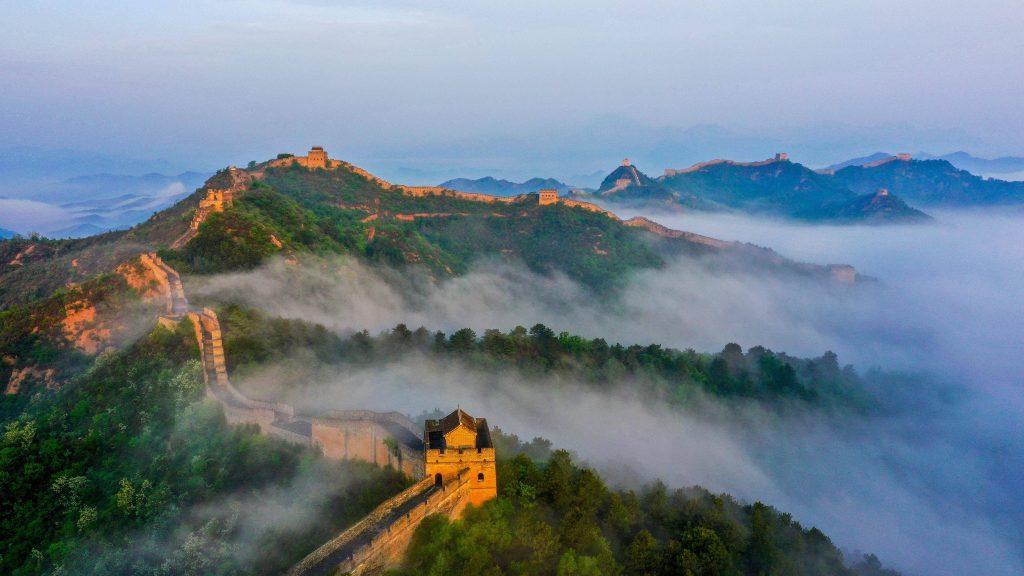
There is a possibility that hiking the Great Wall will be an unforgettable experience; however, it is essential to put safety first. There is a possibility that the terrain will be difficult, and the weather conditions may shift suddenly.
Here are some important safety tips to keep in mind:
- It is always safer to hike with someone else, especially on more remote sections of the trail. Hiking with a friend is what you should do.
- Share Your Plans with Someone: Share with someone your plans, including where you intend to go and when you anticipate returning.
- Stay on the Trails That Have Been Marked: Do not attempt to take shortcuts or explore areas that are not on the trail.
- Pay Attention to Your Surroundings: Pay attention to the terrain and be on the lookout for loose stones, uneven surfaces, and steep drops.
- Don’t try to accomplish too much too quickly; instead, pace yourself. As soon as you feel the need, take a break.
- Ensure that you stay hydrated by drinking a lot of water while you are out hiking.
- In the mountains, the weather can change suddenly, so it is important to be prepared for any changes that may occur. Bring multiple layers of clothing with you, and be ready for any unexpected drops in temperature, wind, or precipitation.
- Carry a Map, Compass, and GPS Device: Even on trails that are clearly marked, it is a good idea to have a map, compass, or GPS device with you. This is especially appropriate if you are hiking on your own.
- Make sure you are aware of your limits and do not push yourself beyond what your body is capable of.
- Ensure that you carry a list of emergency contacts with you at all times. This list should include local authorities as well as your embassy or consulate.
- To ensure that your mobile phone is fully charged, check that it is fully charged. You might want to bring a portable power bank with you.
Solo or with a Guide? How to Determine Your Hiking Tactics
When it comes to hiking the Great Wall, you have two primary choices: you can either participate in a guided tour or you can hike on your own. Each one has advantages and disadvantages.
The Guided Tours:
Positives:
- There is no need to worry about transportation, entrance fees, or logistics because everything is taken care of.
- Guides have the ability to provide insightful information regarding the history and culture of the Great Wall; they are experts in this field.
- The guides are familiar with the terrain and can assist in ensuring your safety because of this familiarity.
- Interaction with Other Hikers: You will have the opportunity to interact with other hikers and meet new people.
- In the event that you are unable to communicate in Chinese, guides are available to assist you with communication.
Negatives:
- The cost of guided tours is typically higher than the cost of hiking on one’s own.
- Your flexibility will be reduced because you will be adhering to a predetermined schedule, and you might not have as much time to explore at your own pace.
- There is a possibility that you will be hiking with a large group of people, which may result in a less personal experience.
Trekking on Your Own:
Positives:
- You have the ability to select your own path, pace, and schedule without any restrictions.
- Cost: In most cases, it is less expensive than participating in a guided tour.
- Absence of crowds allows you to take pleasure in the tranquility and peace that the Wall has to offer.
- Having a sense of adventure can be a rewarding experience, especially when it comes to planning and navigating your own hike.
Negatives:
- Additional planning is required, as you will be responsible for conducting your own research on transportation, permits, and routes.
- There are a number of logistical challenges that can be encountered, including navigating the transportation system and overcoming language barriers.
- Concerns Regarding Your Safety In order to guarantee your safety, you will need to become more self-reliant and take additional precautions.
- Not available for assistance in the event of an emergency or questions.
Discovering a Place to Stay Close to the Wall in Order to Recharge and Relax
There is a wide variety of lodging options available to you in the vicinity of the Great Wall, ranging from budget-friendly guesthouses to more luxurious hotels, provided that you are planning a multi-day hike or want to stay overnight near the Great Wall.
- The term “guesthouse” refers to modest establishments that are typically run by families and provide accommodations that are simple but comfortable. A more genuine cultural experience can be had at these establishments, which are frequently situated in villages close to the Wall.
- There is a wide variety of hotels located in close proximity to the more popular sections of the Wall. These hotels provide varying degrees of comfort and amenities to their guests.
- It is possible to camp along certain sections of the Great Wall; however, in order to do so, you will need to obtain a permit and be prepared for the most fundamental conditions. This is an excellent choice for hikers who have previous experience and are looking to completely submerge themselves in the natural environment. 🏕️
It is strongly recommended that you make early reservations for your lodging, particularly during the busiest times of the year. Hotels and guesthouses that are popular in the area of the Wall can quickly become full.
Exploring the Past and Examining Culture and History Beyond the Stones
By hiking the Great Wall, you will not only be able to test your physical abilities, but you will also have the chance to become fully immersed in the history and culture of China. Learning about the history of the Wall, which is a powerful symbol of China’s long and complicated past, can significantly enhance your experience of visiting the imposing structure.
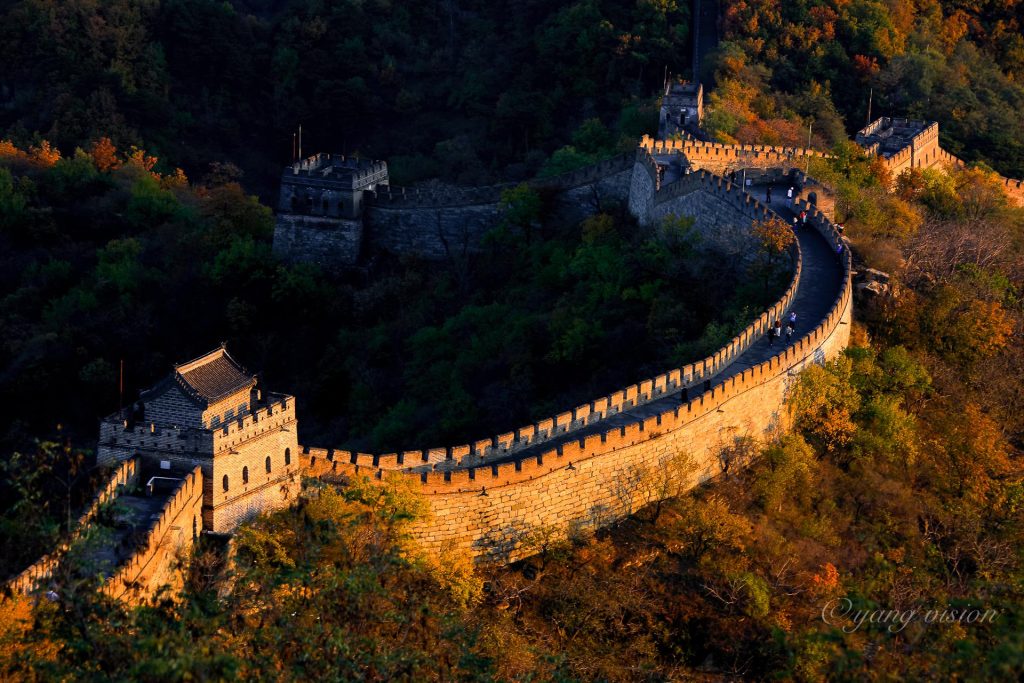
- Take some time to educate yourself on the history of the Great Wall of China before you go on your trip. Educate yourself on the various dynasties that were responsible for its construction and expansion, as well as the function it served and the lives of the individuals who worked and fought on it.
- While you are out on your hike, make sure to stop and take in the Wall’s intricate details. Take note of the various architectural styles, the watchtowers, the beacon towers, and the inscriptions that are carved into the bricks. Imagine the soldiers who patrolled these walls hundreds of years ago, protecting the empire from those who attempted to invade it.
- Get involved with the culture of the area. When you are staying in a village close to the Wall, you should make the most of the opportunity to engage in conversation with the locals. Make an effort to sample the regional cuisine, educate yourself on some fundamental Mandarin phrases, and show respect for the local customs and traditions.
- Going to the local markets can be a very profit-making endeavor. During your time in the area, you will have the opportunity to acquire souvenirs and engage in fundamental bartering activities.
An Experience That Will Last a Lifetime: Enjoy the Great Wall of China Adventure
There is a significant amount of work involved in organizing a hiking trip along the Great Wall of China; however, the benefits of doing so are incalculable. With this opportunity, you will have the chance to push yourself physically, make a connection with history and culture, and experience one of the most famous landmarks in the world in a way that will leave a lasting impression on you.
Put on your boots, gather your belongings, and get ready to embark on a trip that will be remembered for the rest of your life. It is ready to share its stories, its beauty, and its enduring spirit with those who come to visit the Great Wall. 🚶♀🚶🎉


